This week we discussed Experiments #6 (The Superhero Principle) and #7 (The Jenny Craig Principle). Both principles relate to the ability of our thoughts to impact physical matter in the material world. First we discussed the results of the seed experiment. As you may recall, Tammy gifted us with sunflower seeds from her studio garden, along with a little bag of soil. It was such a beautiful gift! I went home and planted my seeds that night.
As I tossed them into the soil playfully, I said, "Isn't it AMAZING that this one row of seeds is already growing faster than the other row?? I'm AMAZED!". At that point, of course, they were "just" dry seeds going into soil, sitting on my kitchen table. Nothing had happened yet. Except my thought and feeling of ALREADY being amazed at their growth.
Two days later, I was truly amazed to see sprouts beginning to show. I literally thought nothing about these seeds other than the feeling of amazement that they were already growing faster.
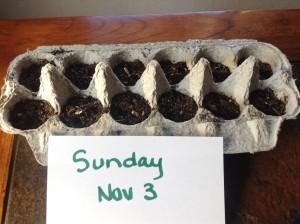
I added a few drops of water to the carton every couple of days, and regardless of what I saw with my eyes, I commented, "Isn't it AMAZING that this row of seeds is growing so much faster than the other row! I am AMAZED!". I didn't say, "I can't believe it!", or "I can't explain it!". I just held the amazement.
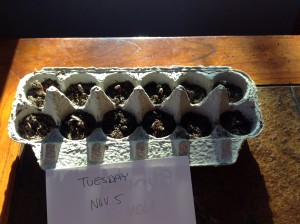
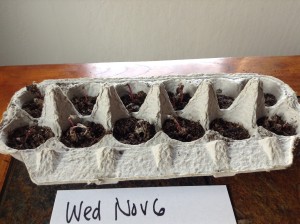
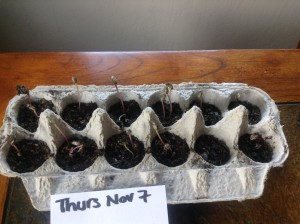
And they continue to grow and amaze me, every single day!
A couple of notes on this experiment for me: I have absolutely NO expectation about me and growing things. I'm not exactly a "green thumb" and haven't had a major draw to grow plants before. I think because of this, I was able to be truly open and playful. I had nothing to prove and everything would be a surprise for me coming from these seeds.
Tammy planted her seeds one day after mine and they had not sprouted at the time of our meeting yesterday. She had placed them with loving care in a special spot at her studio, and every day as she watered them, she waved her hand over them to transmit loving and encouraging energy to the seeds. She talked to them, using the energy of her words to support their growth.
Why were our results different?
We talked about the difference in energy between "wanting" something to happen and "believing" it is already happening. When you send an energy of "want", the result remains in the future. You receive what you asked for, which is continuous wanting. When you believe that something IS, and carry that energy regardless of the "results" you can see with your eyes right now, you support the essence of life that wants to thrive, grow, and come into being.
We demonstrated this with the Push Together-Pull Apart experiment, which I learned from my life coaching mentor, Martha Beck. It goes like this (and is discussed in Martha's latest book, Finding Your Way in a Wild New World):
1. Have a partner stand with their arms bent, hands in front of their body, with palms facing in (as if they are about to clap).
2. Tell them not to let you push their hands together, as you press on the tops of their hands as hard as you can. Fill your thoughts with effort, pushing, and domination as you do this.
3. Now, do the same thing, except this time hold in your mind thoughts of joy and love, or a time in your life when you felt utterly at peace. Don't think about the other person, just hold these thoughts and allow them to spread throughout your entire being. Now just put your palms on the backs of your partner's hands and move your own hands together.
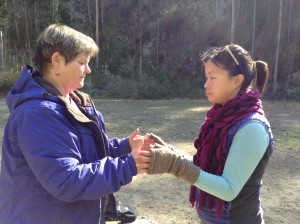
Experiment #7 was about our food being the carrier of our thoughts' energy into our bodies. Since I don't own a scale, I did this experiment by measuring how I feel in my body when I take the time to taste my food completely. If I'm talking while I eat, this is more difficult to practice. This is when I often lose track of what I'm feeling, and just keep putting food in my mouth until the plate is clean.
For those of you who would like to lose a few pounds, I'm curious what your results are after trying Pam's advice. Notice any negative thoughts you have toward your own body. Let them go and replace them with thoughts that praise your body for the way it already is. Take a moment to bring your thoughts into a state of peace, love, and joy, before you eat your food. And see what happens!
At Quarry Park, the sun continued to shine on us, and it was an unseasonably warm day.
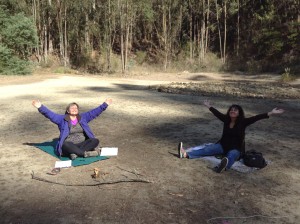
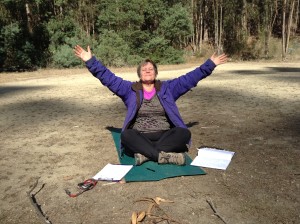
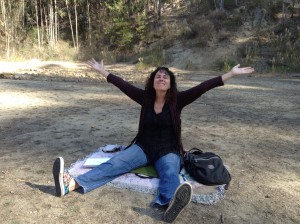
Later in the afternoon, we all attended a monthly gathering of Art and Inspiration hosted by Amy Sullivan. Tammy painted a "butterfly brain" image inspired by the E-Squared Book Club.
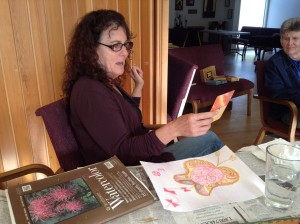
Shirley made a collage of cats and flowers and castles and circles.
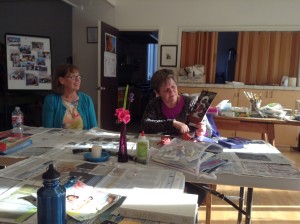
And I played with my new acrylic gel mediums. FUN! 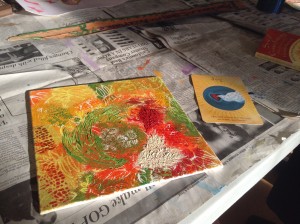 I drew the "Joy" card from the Soul Coaching deck. Its message was to remember that my soul's purpose is simple - to experience joy. And to share this and its healing qualities with the world.
I drew the "Joy" card from the Soul Coaching deck. Its message was to remember that my soul's purpose is simple - to experience joy. And to share this and its healing qualities with the world.
It has been my joy to create this book club and to experience the discoveries together in a circle.
Next week, we discuss the last two chapters, Experiments #8 and #9. In our final week, we will design our own experiments for the holiday season and end of year.
To listen to a brief (17-minute) recording from the phone meeting, click here.
As always, please feel free to share your stories in the comments!
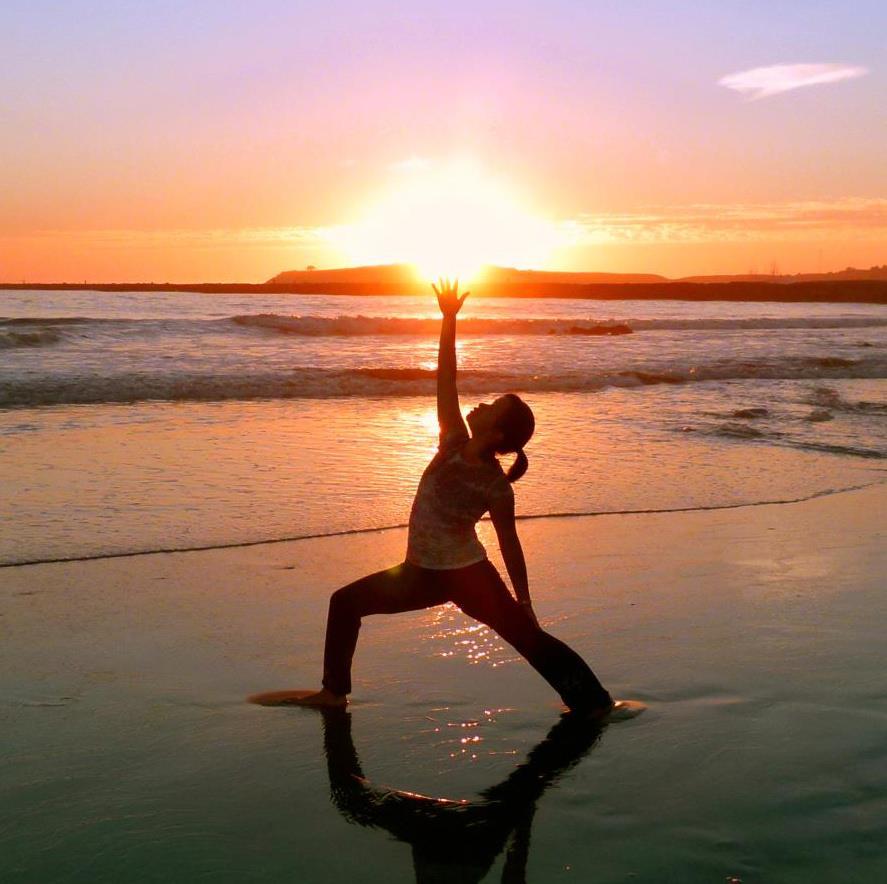 The Native American tradition speaks of each person's Original Medicine - that set of gifts that only you can offer the world with your particular life. I've always felt there was such a finality to the phrase "Original Medicine" - like I had to define the one thing I was here to do, or it would be lost forever.
The Native American tradition speaks of each person's Original Medicine - that set of gifts that only you can offer the world with your particular life. I've always felt there was such a finality to the phrase "Original Medicine" - like I had to define the one thing I was here to do, or it would be lost forever.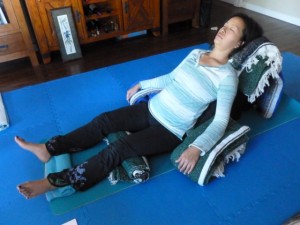 While my body floats in the feeling of being totally supported, my mind rests. It cannot feel fear in this moment of rest. And each moment I spend here, I train in courage. I look fear in the face - the fear that whispers a "To Do" list in my ear - and I do nothing anyway.
While my body floats in the feeling of being totally supported, my mind rests. It cannot feel fear in this moment of rest. And each moment I spend here, I train in courage. I look fear in the face - the fear that whispers a "To Do" list in my ear - and I do nothing anyway.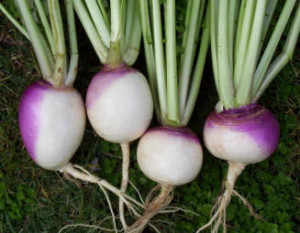
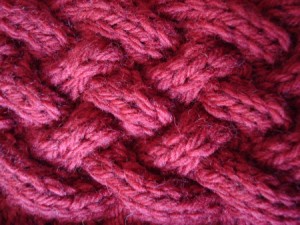 In The Wisdom of No Escape, there's a chapter where Pema Chodron talks about three useful qualities for life and for meditation: precision, gentleness, and letting go.
In The Wisdom of No Escape, there's a chapter where Pema Chodron talks about three useful qualities for life and for meditation: precision, gentleness, and letting go.